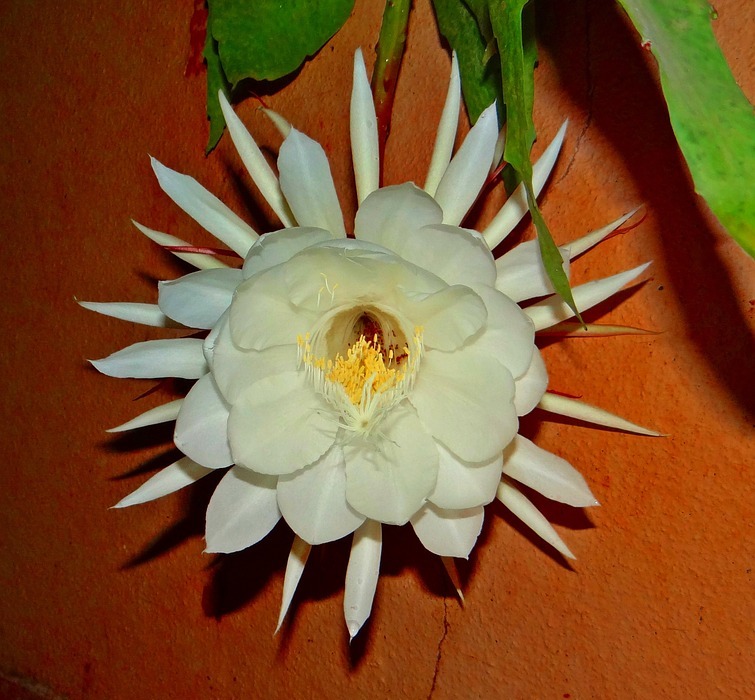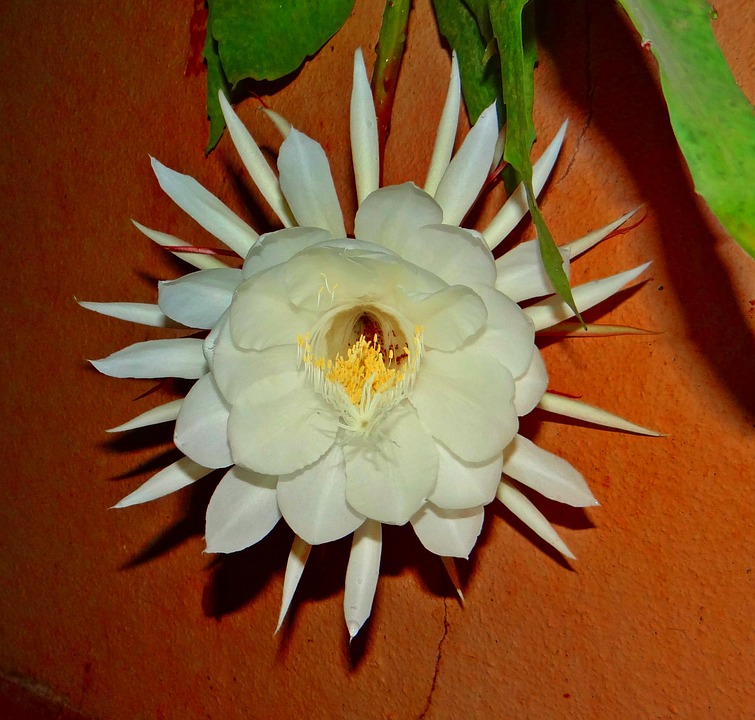Part 1: Deciphering the Christmas Cactus

1.1 Unveiling the Festive Plant
The Christmas cactus, scientifically named Schlumbergera bridgesii, is a captivating member of the cactus family. Originating from the lush rainforests of Brazil, it's renowned for its vibrant blooms that coincide with the holiday season, often mistaken for poinsettias.1.2 Beyond the Festive Charm: Understanding Its Nature
Christmas cacti, unlike their desert-dwelling counterparts, thrive in humid environments. Their flat, segmented stems are adorned with striking flowers in various shades of red, pink, white, and orange. This unique beauty makes them a popular choice for indoor decorations, especially during the festive period.Part 2: Assessing the Toxicity

2.1 The Lowdown on Christmas Cactus Toxicity
While Christmas cacti are not classified as highly toxic to cats, they contain saponins. These compounds, though not lethal in small quantities, can irritate the gastrointestinal tract, leading to mild discomfort.2.2 The Science Behind Saponins
Saponins are naturally occurring compounds found in various plants, including Christmas cacti. They possess a soap-like quality, hence their name, and are known to act as a natural defense mechanism against pests and herbivores.Part 3: Spotting the Signs: Symptoms of Christmas Cactus Poisoning
3.1 Mild Reactions: Recognizing the Early Warning Signs
Vomiting: Cats may experience vomiting after ingesting parts of the Christmas cactus. Diarrhoea: Loose stools or diarrhoea may be observed, often accompanied by abdominal discomfort. Loss of Appetite: Cats may show a decrease in appetite after ingesting the plant.3.2 Severe Reactions (Rare): When to Seek Urgent Care
While severe reactions are uncommon, it's crucial to be aware of potential complications: Salivation: Excessive drooling indicates irritation in the mouth and throat. Weakness: Cats may display signs of weakness and lethargy. Tremors: In rare cases, cats may experience tremors or muscle spasms.Part 4: Identifying Potential Risks
4.1 The Cat's Curiosity: A Major Factor
Cats are naturally inquisitive and playful creatures, often exploring their surroundings with their mouths. This innate curiosity can lead them to nibble on plants, including Christmas cacti.4.2 Placement Matters: Minimizing Accessibility
The location of the Christmas cactus is paramount in preventing accidental ingestion. Keep it out of reach of your cat on elevated surfaces, hanging baskets, or enclosed areas.4.3 Cat-Specific Factors: Individual Predisposition
Some cats are more prone to chewing on plants than others. Observe your cat's behaviour around houseplants and take extra precautions if they exhibit a particular interest in the Christmas cactus.Part 5: First Aid and Veterinary Care
5.1 Swift Action: Immediate Steps in Case of Ingestion
If you suspect your cat has ingested a Christmas cactus, take the following steps: Remove any remaining plant material: Ensure your cat doesn't have access to any more of the cactus. Monitor closely: Pay close attention to your cat's behaviour and any changes in their health. Contact your veterinarian: It's always best to seek professional advice from a veterinarian.5.2 Veterinary Assessment: Seeking Professional Guidance
Your veterinarian will conduct a thorough examination and determine the appropriate course of action based on the severity of the situation. This may involve: Observation: Monitoring the cat's condition for signs of poisoning. Treatment: Administering medication if necessary to alleviate symptoms. Inducing Vomiting: This may be recommended to remove any ingested plant material, especially if the ingestion was recent.Part 6: Preventing Christmas Cactus Poisoning: A Holistic Approach
6.1 Safe Placement: Out of Reach and Out of Sight
Prioritize the location of your Christmas cactus, ensuring it's inaccessible to your feline friend. High shelves, hanging baskets, or enclosed areas are effective solutions.6.2 Alternative Plants: Cultivating a Safe Garden
Consider planting cat-friendly alternatives that provide visual appeal and olfactory stimulation without posing health risks:- Catnip (Nepeta cataria): A classic cat favourite, known for its stimulating effects.
- Cat Grass (Avena sativa): A safe and nutritious option for cats to nibble on.
- Spider Plant (Chlorophytum comosum): Attractive and readily available, offering a safe alternative for curious cats.
- Peperomia (various species): A diverse genus offering a variety of textures and colours.
6.3 Environmental Enrichment: Diverting Attention
Provide your cat with a stimulating environment to keep them entertained and engaged. Toys, scratching posts, interactive games, and climbing structures can redirect their attention away from plants.Part 7: FAQs: Addressing Common Concerns
7.1 Q: Are all cacti poisonous to cats?
A: While many cacti are not highly toxic, some species, like the Saguaro cactus (Carnegiea gigantea), contain toxic compounds. Always research the specific type of cactus before introducing it to your cat's environment.
7.2 Q: How do I know if my cat has eaten a Christmas cactus?
A: Look for signs like vomiting, diarrhoea, loss of appetite, or excessive drooling. If you observe any of these symptoms, contact your veterinarian immediately.
7.3 Q: What should I do if my cat chews on a Christmas cactus?
A: First, remove any remaining plant material. Monitor your cat closely for signs of poisoning, and contact your veterinarian as soon as possible.
7.4 Q: Can I use commercial cat deterrents around my Christmas cactus?
A: While commercial deterrents may be helpful, it's essential to choose products safe for both your cat and your plant. Consult with your veterinarian or a gardening expert for recommendations.
7.5 Q: Can I use a plant spray to deter my cat from the Christmas cactus?
A: Avoid spraying toxic chemicals near plants that your cat may access. Consider using natural deterrents like citrus peels or vinegar.
7.6 Q: Is it safe to have a Christmas cactus in my home if I have a cat?
A: With proper precautions, you can safely enjoy a Christmas cactus in your home with your cat. Keep the plant out of reach and provide alternative options for your cat's chewing and entertainment.
7.7 Q: Are Christmas cactus blooms toxic to cats?
A: While the flowers themselves are not considered highly toxic, they may still contain saponins. It's best to err on the side of caution and keep the entire plant out of your cat's reach.
7.8 Q: What are some other common holiday plants that are toxic to cats?
A: Besides poinsettias, several other festive plants are harmful to cats, including:
- Amaryllis (Amaryllis belladonna): Contains toxic alkaloids that can cause vomiting, diarrhoea, and even death.
- Mistletoe (Viscum album): Can cause gastrointestinal upset, weakness, and even death in cats.
- Holly (Ilex aquifolium): Contains compounds that can cause vomiting, diarrhoea, and lethargy in cats.
Everyone is watching
-

Are Cat Ribs Flexible? Understanding Their Anatomy
CATS & KITTENSThis article delves into the fascinating world of feline anatomy, exploring the flexibility of cat ribs and ho...
-

Can Cats Eat Bananas? (Everything You Need to Know)
CATS & KITTENSThis article dives into the intriguing question of whether cats can safely enjoy the sweet, yellow fruit, bana...
-

Cat Lifespan: How Long Do Cats Live?
CATS & KITTENSThis comprehensive guide explores the factors influencing the lifespan of our feline companions, providing ins...
-

Can Cats Get COVID-19? What You Need to Know
CATS & KITTENSThis article will delve into the fascinating world of feline COVID-19 susceptibility. We'll explore whether ca...
-

Can Cats Eat Eggs? A Complete Guide to Egg Safety for Your Feline Friend
CATS & KITTENSWhen it comes to treating our furry companions, we all want to ensure we're doing what's best for them. Eggs...
